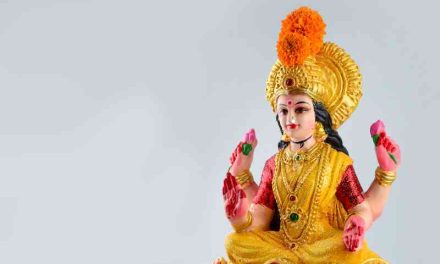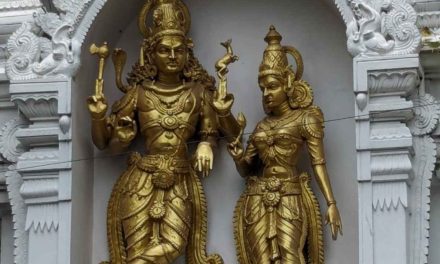The Brihadaranyaka Upanishad is one of the oldest and most important scriptures of Hinduism. It is part of the Shukla Yajurveda, one of the four Vedas that contain the sacred knowledge of the ancient sages. The word Brihadaranyaka means “the great forest” and Upanishad means “sitting near” or “secret teaching”. The Brihadaranyaka Upanishad is a guide to the great forest of knowledge that leads to the realization of the self and Brahman, the supreme reality.
The Brihadaranyaka Upanishad consists of six chapters, divided into three sections: the Madhu Kanda, the Muni Kanda, and the Khila Kanda. The Madhu Kanda contains six brahmanas or teachings on the nature of Brahman, the self, and the universe. The Muni Kanda contains two brahmanas that narrate the dialogues between the sage Yajnavalkya and his wife Maitreyi, and between Yajnavalkya and several other scholars on various topics related to Brahman and the self. The Khila Kanda contains four brahmanas that deal with various rituals, ethics, and metaphysics.
The main theme of the Brihadaranyaka Upanishad is the identity of the self (atman) and Brahman (the absolute reality). The Upanishad teaches that everything in the universe is a manifestation of Brahman, and that Brahman is identical to the self within each individual. The Upanishad also explains how to attain this knowledge through various methods of meditation, inquiry, and ethical conduct. The Upanishad declares that one who knows Brahman becomes Brahman, and attains immortality, bliss, and freedom from all bondage.
The Brihadaranyaka Upanishad is a treasure trove of wisdom and insight for anyone who seeks to understand the ultimate truth of existence. It is a guide to the great knowledge of the self that transcends all limitations and distinctions. It is a guide to the great forest of knowledge that reveals the beauty and harmony of all creation. It is a guide to the great mystery of Brahman that lies within and beyond everything. It is a guide to the great adventure of life that leads to liberation and joy.
Unveiling the Essence of Self:
The Brihadaranyaka Upanishad, often referred to as the “Great Forest Upanishad,” is a collection of profound dialogues and discourses between sages and seekers. It is composed in the form of conversations, exploring the nature of reality, the self (Atman), and the interconnectedness of all things. At its heart lies a fundamental inquiry into the nature of existence itself.
Self and Ultimate Reality:
Central to the teachings of the Brihadaranyaka Upanishad is the concept of “Atman,” often translated as the self or soul. However, the Upanishad goes beyond the conventional understanding of self and invites us to explore a deeper, more universal self that transcends individual identity. It teaches that this Atman is not separate from the ultimate reality, often referred to as Brahman – the cosmic, all-encompassing consciousness.
The Illusion of Separation:
The Upanishad skillfully deconstructs the illusion of separation that dominates human perception. It elucidates that the universe is interconnected and that the boundaries we perceive between ourselves and the world around us are merely constructs of the mind. Through profound teachings and parables, it leads us to realize that the same essence that resides within us also resides within all living beings and the entire cosmos.
The Nature of Creation:
The Brihadaranyaka Upanishad doesn’t shy away from exploring the nature of creation and the universe. It presents intricate philosophical concepts, such as the theory of “panchakosha” (five sheaths), which explains the layers that veil the true self. These layers include the physical body, the vital energy, the mind, the intellect, and finally, the bliss sheath, which is closest to the true self. By understanding and transcending these layers, one can attain a deeper awareness of oneself.
From Rituals to Wisdom:
The Upanishad also addresses the significance of rituals and sacrifices but takes them to a higher level of understanding. It emphasizes that true knowledge and realization are more valuable than mere ritualistic practices. Through dialogues and stories, it underscores the importance of moving beyond external rites and connecting with the spiritual essence that underlies all actions.
The Journey of Self-Discovery:
The teachings of the Brihadaranyaka Upanishad guide us on a transformative journey of self-discovery. It urges us to reflect upon our own existence, question the nature of reality, and seek answers beyond the surface level of life. This introspective approach helps us break free from the limitations of our conditioned beliefs and societal norms, leading us toward genuine self-realization.
Relevance in the Modern World:
Despite being thousands of years old, the wisdom of the Brihadaranyaka Upanishad remains remarkably relevant in the modern world. As our lives become increasingly fast-paced and complex, the Upanishad offers a path to inner peace and clarity. Its teachings inspire us to cultivate mindfulness, embrace interconnectedness, and strive for a deeper understanding of ourselves and our place in the universe.
In conclusion, the Brihadaranyaka Upanishad stands as a guide to the great knowledge of the self – a timeless beacon that illuminates the path to self-realization and ultimate truth. Through its profound teachings, it invites us to explore the depths of our own being, question the nature of reality, and uncover the interconnectedness that binds us all. As we engage with the insights of this ancient text, we embark on a journey of transformation, ultimately leading us to a more profound understanding of ourselves and the universe we inhabit.





